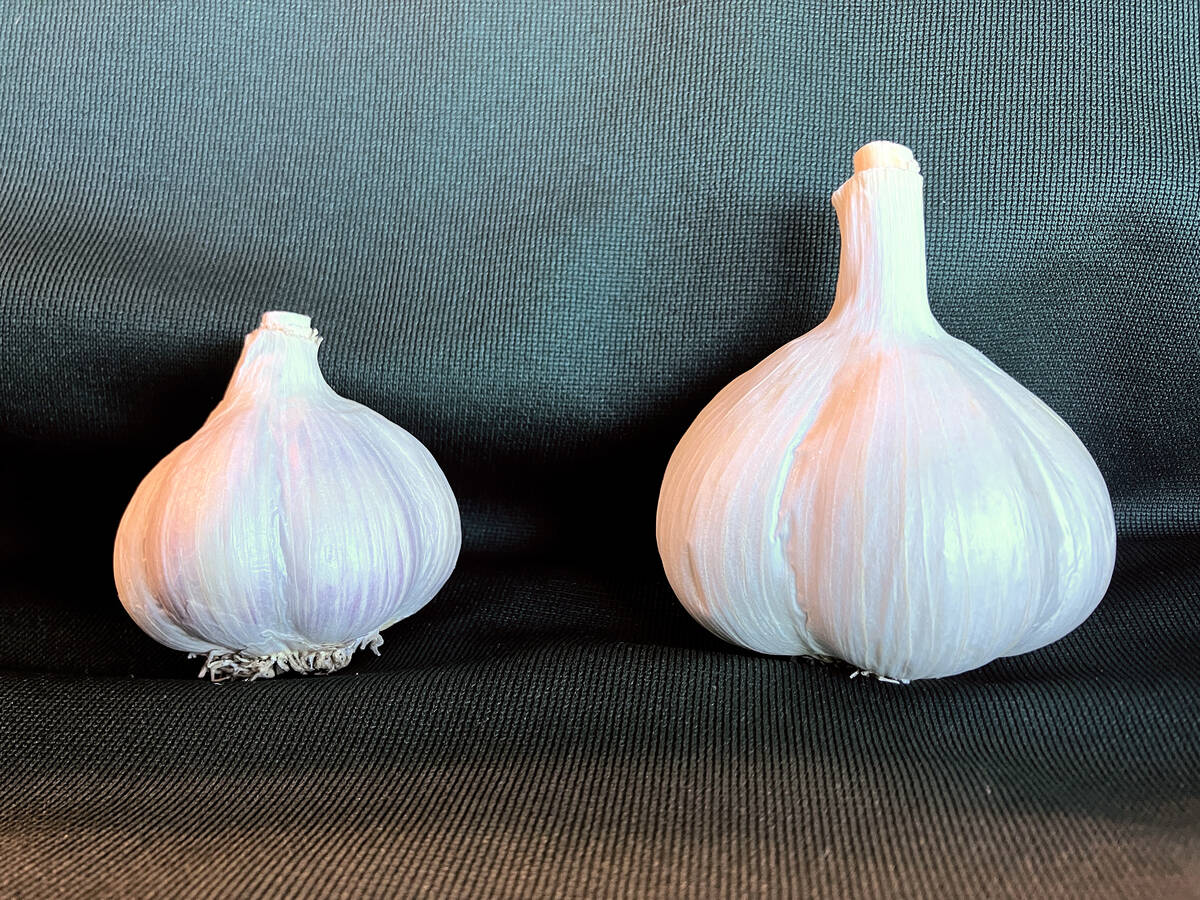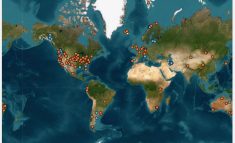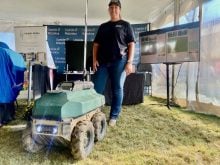An annual soil nitrogen test survey led by the Ontario Ministry of Agriculture Food and Rural Affairs (OMAFRA) has been discontinued for 2022, with the ministry’s corn industry program lead Ben Rosser hoping to work with partners to come up with what he describes as a more effective and easily-administered replacement.
The Pre Sidedress Nitrogen Test (PSNT) survey was undertaken with financial support from Grain Farmers of Ontario and SGS Agri-Food Laboratories in Guelph and aimed to form the basis for recommendations of N application rates in a weather and crop development window that, in a typical year, runs from mid-June to mid-July and encompasses the V3 to V4 growth stage.
Why it matters: Rising fertilizer prices earlier this year left farmers eager for recommendations that could save on input costs.
Read Also

Clean seed garlic promises bigger bulbs and higher returns for growers
Ontario garlic trials show clean seed outshines conventional yields, with stronger drought resilience, reduced virus risk and greater economic outcomes.
According to Maizex Seeds lead agronomist Greg Stewart, between 50 and 60 per cent of corn grown in Ontario gets some sort of sidedress or over-the-top N application during this weather/crop development window. Some growers apply all their N before planting, Stewart told Farmtario, but “the window we’re in now” is definitely prime N-application time.
In years past, that window was restricted by the equipment available to the first half of June but “now, we’ve got a whole fleet of high-clearance options” that extends that window well into July.
For the annual PSNT survey, OMAFRA’s Field Crop staff preferred to use approximately 90 sites that hadn’t seen nitrogen applied previously in the growing season either through synthetic fertilizer, manure or biosolids. Sites coming out of alfalfa, red clover or other N-credit cover crops were also seen to skew the results.
“PSNT recommendations are only calibrated for where soil nitrate samples are measuring naturally mineralized N and should not be used where broadcast N fertilizer has been applied,” explained the preamble to the 2021 report of PSNT survey results on the ministry’s Field Crop News website.
“A modest amount of N applied banded (eg. 30 lb-N/acre) or in furrow as starter is OK provided sampling is done mid-row to avoid these bands.”
Speaking to Farmtario June 15, Rosser said, “what we need are sites that give an idea about what nitrogen the soil is naturally releasing year to year … and it has been getting harder and harder to do that.”
Despite the absence of a 2022 survey, monitoring of soil nitrogen levels has continued in Ontario’s corn country. Stewart’s employer, Maizex Seeds, collected samples recently to determine what he described in an interview as “a first look at our soil nitrate” on several corn sites — with, in his estimation, somewhat surprising results.
“The number of fields sampled to date is not large, so these results must be taken with some level of caution,” he wrote in a June 8 post on the company’s website. And he conceded to Farmtario that the sites varied regarding management; some had manure, others didn’t. Some had fertilizer applied in the first 10 days of May.
“But the nitrate levels are nevertheless some of the highest we have ever seen for this time of year and are mostly above the threshold where you would consider applying any more N,” Stewart wrote.
Based on the findings, Stewart felt confident enough to advise growers to reconsider the need for their previously planned rates of sidedress N. Or, in some cases, to reconsider any additional N.
Writing about what he labelled “a real field in Perth County that exemplifies some of the trends we are seeing,” he stated Maizex’s “N tracker” took into account starter fertilizer, manure and pre-plant urea-ammonium nitrate (UAN) and calculated sidedress needs of 21 pounds per acre. “However, the soil nitrate test is seriously suggesting that no more N is needed — with soil N tests running in the 50 to 60 ppm range.
“We were a little surprised (about Maizex’s soil nitrate test results) because April and May were not overly warm and it’s the warm weather that usually drives the mineralization and adds to the nitrate pool,” Stewart told Farmtario. His theory — admittedly just a theory, he laughed — was the general absence during that time of saturated soils.
“The fact we had fairly few of those weekend-long rains where everything sat wet (is) my best estimate for why our nitrate levels seem so robust.”
Looking forward into the growing season, late June through mid-July is generally when corn most readily utilizes nitrogen. Asked about N stabilizers to slow the conversion to nitrate when it can be lost to leaching (in sandy soil) or nitrification (in clays),
Stewart said the window for those has probably passed.
“Why would you want to slow the conversion to nitrate when the corn needs it now?”
Weather always a gamble
The weather forecast, however, continues to play a big role. A recently completed 10-year trial of N applications in corn at the University of Guelph’s Elora Research Station showed that, in the mid-June to mid-July period, rainfall can definitely translate into yield. But if not enough N is available, growers lose out on the potential yield gains.
On the other hand, if rainfall is light, yield will decrease — regardless of N. In those years, if growers fertilize hoping to offset the rainfall-related loss, the Elora research suggests they’re wasting money.
“There are a couple of caveats to those findings,” explained Rosser, referring to the work completed by now-retired Professor Bill Deen and graduate student Caleb Niemeyer. One is Elora’s loamy soil; the other is that the trials were done on the same field, corn-on-corn, over 10 years. So there was “a really low, stable N supply in the soil.
“If you’re coming in with corn after alfalfa or clover with a high mineralization potential, your N supply is going to be different,” Rosser said.
Stewart, though, said he’s confident telling growers about the Elora study results. He advises when things get dry you should feel more comfortable about backing off by 25 to 30 pounds of N per acre because there’s little evidence it will contribute to increased yield under these conditions. If it gets wet for the rest of June, following the N recommendations could have a yield effect.
“Everyone knows that’s a tough call to make. It’s easy to look back on that in December and say ‘I made the right decision.’ But it’s tough to make the call in June when you don’t know what the weather holds.”
Nitrogen cost
If cost of N is your most pressing concern, both Rosser and Stewart stress it’s not the price for fertilizer that should matter most.
Instead, it’s the ratio between the cost of N and price you’ll receive for your corn. “And we have seen some pretty good prices for corn,” said Stewart.
“There certainly is some pressure on growers because of the cost of N,” he conceded, but many bought either all or a good portion of their projected needs before the big surge in price in late 2021 and early 2022.
Rosser agrees. “Back in the winter, fertilizer had gone up in price quite a lot. But since then corn has continued to climb so it has definitely pushed our ratio back into a range for profitability.”
If you’re still not convinced, Stewart advises that “if you’ve typically applied 200 pounds of N per acre and have been following recommendations based on your average yield, this might be the year to drop back on that by 20 or 30 pounds and you’ll likely not find yourself short at the end of the season.” But if you typically apply 165 pounds of N per acre, “there’s probably a little more risk involved if you’re going to drop back by that much.”
Rosser is hopeful about the creation of a grower-friendly and researcher-friendly tool to replace the PSNT survey.
“We would definitely like to be able to provide something for guidance going into this part of the growing season,” he said. “This year, we’re going to try and sit down with some of the researchers and figure out what is the best tool.”















